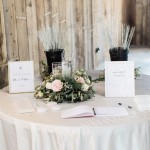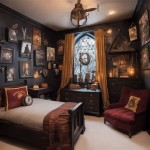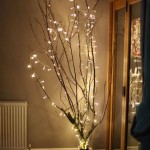Best Ideas for Decorating a Bedroom
The bedroom, often considered a sanctuary, is a space dedicated to rest, relaxation, and personal expression. Its decoration should reflect these purposes, creating an environment that is both aesthetically pleasing and conducive to a peaceful state of mind. Numerous approaches exist to achieve this, ranging from simple adjustments to complete overhauls. This article will outline several key ideas for bedroom decoration, focusing on elements that contribute to both visual appeal and functional comfort.
Color Palette Selection and Implementation
The color palette is arguably the most influential aspect of bedroom decoration. Colors have a significant impact on mood and can dramatically alter the perceived size and atmosphere of a room. When selecting a color scheme, it's crucial to consider the existing light conditions and the desired ambiance.
For smaller bedrooms, lighter colors like off-whites, creams, and pastel shades are generally recommended. These colors reflect light, making the room appear larger and more open. Utilizing a monochromatic color scheme, where different shades of the same color are used, can also create a sense of spaciousness and harmony. Accent colors can be introduced through accessories and textiles to add visual interest without overwhelming the space.
Larger bedrooms offer more flexibility in terms of color choices. Deeper, richer tones like navy blue, emerald green, or even charcoal gray can create a cozy and intimate atmosphere. However, it's important to balance these darker hues with lighter elements to prevent the room from feeling too oppressive. For example, pairing a dark-colored accent wall with light-colored bedding and furniture can achieve a sophisticated and balanced look.
Beyond the general lightness or darkness of colors, their specific properties also matter. Cool colors, such as blues, greens, and purples, are often associated with tranquility and relaxation, making them ideal for bedrooms. Warm colors, like reds, oranges, and yellows, can create a sense of energy and warmth, but should be used sparingly as accent colors to avoid overstimulation. Neutral colors, such as gray, beige, and white, provide a versatile backdrop that can be easily adapted to different styles and preferences.
Paint finishes also play a role. Matte finishes absorb light and create a softer, more muted look, while glossier finishes reflect light and add a touch of vibrancy. Eggshell or satin finishes are often recommended for bedroom walls as they offer a good balance between durability and light reflectivity. Consider using different finishes to highlight architectural details or create subtle visual texture.
Furniture Arrangement and Selection
The arrangement of furniture is critical for both the functionality and aesthetics of a bedroom. A well-arranged room will feel comfortable and inviting, while a poorly arranged room can feel cramped and chaotic. The bed is typically the focal point of the bedroom, and its placement should be prioritized.
Ideally, the bed should be positioned so that it is easily accessible from both sides and offers a clear view of the entrance. Avoid placing the bed directly in line with the doorway, as this can create a feeling of vulnerability. If possible, position the bed against the longest wall in the room to maximize space and create a sense of stability.
Nightstands are essential for providing convenient storage and surface space next to the bed. They should be positioned at a comfortable height and within easy reach. Consider incorporating nightstands with drawers or shelves to maximize storage space and keep the bedside clutter-free. Lamps placed on the nightstands provide ambient lighting for reading and relaxation.
Dressers and wardrobes provide additional storage for clothing and accessories. Their placement should be carefully considered to avoid blocking pathways or obstructing windows. If space is limited, consider using tall, narrow dressers to maximize vertical storage. Mirrored wardrobe doors can also help to create the illusion of more space.
Seating areas, such as armchairs or small sofas, can add a touch of luxury and comfort to the bedroom. These areas provide a comfortable space for reading, relaxing, or simply unwinding after a long day. Position seating areas near windows to take advantage of natural light and views. Smaller bedrooms might benefit from a single comfortable armchair rather than a full sofa.
When selecting furniture, it's important to consider the overall style and color scheme of the room. Choose furniture pieces that complement each other and create a cohesive look. Avoid overcrowding the room with too much furniture, as this can make it feel cramped and claustrophobic. Opt for pieces that are both functional and aesthetically pleasing, and prioritize quality over quantity.
Lighting Strategies and Fixture Choices
Effective lighting is essential for creating a relaxing and inviting bedroom. The right lighting can enhance the room's ambiance, highlight its features, and provide functional illumination for various activities.
A layered lighting approach, which combines different types of lighting, is often the most effective strategy. This approach typically includes ambient lighting, task lighting, and accent lighting. Ambient lighting provides overall illumination for the room, while task lighting provides focused light for specific activities, such as reading or dressing. Accent lighting is used to highlight architectural features or artwork.
Overhead lighting, such as ceiling fixtures or chandeliers, provides ambient lighting for the entire room. Dimmable overhead lights are particularly useful as they allow you to adjust the brightness to suit different moods and activities. Consider using a ceiling fan with an integrated light fixture to provide both lighting and ventilation.
Table lamps and floor lamps provide task lighting for reading, writing, or other activities. Position table lamps on nightstands or desks, and place floor lamps near seating areas. Choose lamps with adjustable arms or shades to direct the light where it is needed most.
Accent lighting can be used to highlight artwork, architectural features, or decorative objects. Consider using strategically placed spotlights or wall sconces to draw attention to these elements. String lights or fairy lights can also add a touch of whimsy and romance to the bedroom.
When selecting light fixtures, it's important to consider their style and finish. Choose fixtures that complement the overall design of the room and reflect your personal taste. Consider using energy-efficient LED bulbs to save money and reduce your environmental impact. Also, ensure that the color temperature of the light bulbs is appropriate for the bedroom. Warmer color temperatures (around 2700K) create a more relaxing and inviting atmosphere, while cooler color temperatures (around 5000K) are better suited for task lighting.
Textiles and Soft Furnishings
Textiles and soft furnishings play a crucial role in creating a comfortable and inviting bedroom. They add texture, warmth, and visual interest to the space and contribute significantly to its overall ambiance.
Bedding is arguably the most important textile element in the bedroom. Choose bedding that is both comfortable and aesthetically pleasing. Opt for soft, breathable fabrics such as cotton, linen, or silk. Consider using a duvet cover or comforter that is easy to clean and can be changed seasonally. Layer pillows of different sizes and shapes to create a luxurious and inviting look. Throw blankets can add an extra layer of warmth and texture to the bed.
Curtains or blinds are essential for controlling light and privacy in the bedroom. Choose curtains or blinds that complement the overall style of the room and provide adequate light blockage. Blackout curtains are particularly useful for bedrooms as they can completely block out light, promoting better sleep. Consider using sheer curtains or blinds to soften the light and add a touch of privacy during the day.
Rugs can add warmth, texture, and visual interest to the bedroom floor. Choose a rug that is large enough to anchor the bed and provide a comfortable surface to walk on. Consider using a rug with a soft, plush texture for added comfort. Smaller rugs can be used to define specific areas within the room, such as seating areas or dressing areas.
Throw pillows and cushions can add a touch of color, texture, and comfort to seating areas. Choose pillows and cushions in a variety of sizes, shapes, and textures. Consider using pillows and cushions with different patterns or prints to add visual interest. Arrange the pillows and cushions in a way that is both aesthetically pleasing and comfortable.
Wall hangings, such as tapestries or fabric art, can add texture and visual interest to the walls. Choose wall hangings that complement the overall style of the room and reflect your personal taste. Consider using wall hangings made from natural materials, such as wool or cotton, to add a touch of warmth and texture.
Personalization and Decorative Accents
Personalization is key to creating a bedroom that truly reflects your individual style and preferences. Incorporating decorative accents that are meaningful to you can transform a generic space into a personal sanctuary.
Artwork is an excellent way to personalize the bedroom. Choose artwork that you find inspiring, uplifting, or simply aesthetically pleasing. Consider using a variety of different types of artwork, such as paintings, prints, photographs, or sculptures. Arrange the artwork in a way that is both visually appealing and meaningful to you. Displaying artwork on the walls, shelves, or even leaning against the wall can add character to the space.
Photographs are a great way to display personal memories and create a sense of connection to loved ones. Choose photographs that are meaningful to you and display them in stylish frames. Consider creating a gallery wall or arranging the photographs on a shelf or table. You can also display photographs in photo albums or scrapbooks.
Plants can add a touch of nature and freshness to the bedroom. Choose plants that are easy to care for and thrive in indoor environments. Consider using plants with air-purifying properties to improve the air quality in the bedroom. Display the plants in stylish pots or containers that complement the overall style of the room. Grouping plants together can create a more visually appealing and cohesive look.
Books can add a sense of sophistication and intellectual curiosity to the bedroom. Display books on shelves, tables, or nightstands. Consider arranging the books by color or size to create a more visually appealing display. You can also use books as decorative accents, such as stacking them under a lamp or displaying them on a coffee table.
Decorative objects, such as vases, candles, or figurines, can add a touch of personality and visual interest to the bedroom. Choose decorative objects that reflect your personal taste and complement the overall style of the room. Arrange the decorative objects in a way that is both aesthetically pleasing and functional. Consider using decorative trays or bowls to organize small items, such as jewelry or keys.

Best Bedroom Decor Ideas Forbes Home

101 Bedroom Decorating Ideas 2025 Interior Design

30 Stylish Bedroom Wall Decor Ideas And Tips

The Best Bedroom Decor Ideas Stunning Designs In 2025

Bed Decoration Ideas To Recharge In Style Designcafe

100 Best Bedroom Ideas Design Inspiration

25 Latest Bedroom Decoration Ideas By Livspace 2025

How To Style A Bedroom 18 Decorating Tips Extra Space Storage

60 Diy Bedroom Makeover Ideas Tips

85 Bedroom Ideas How To Decorate A Stunning
Related Posts







